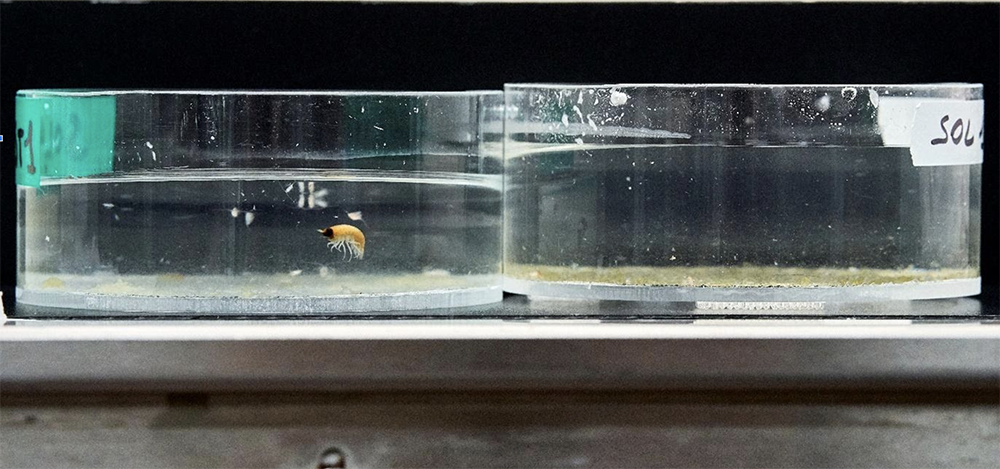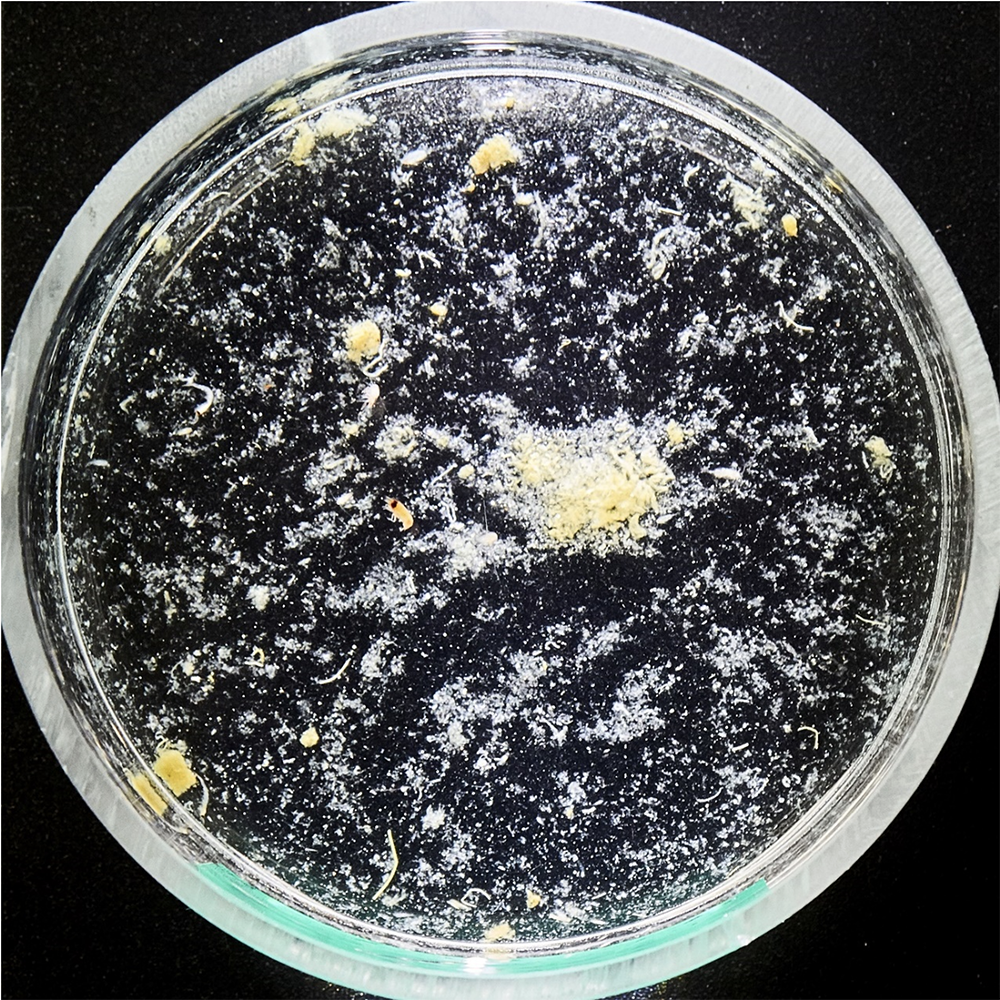Gels reveal particles exported to the Twilight Zone
Matthieu Bressac & Philip Boyd
We are now at our polar site and have completed 6 deployments of our free-drifting surface-tethered mooring made up of three sediment traps and three RESPIRE particle interceptor/incubators, with two at each depth.

Side view of two gels from contrasting sites. The gel on the left has an amphipod suspended ‘mid gel,’ and also mostly particles at its base – reflecting faster sinking particles that penetrate to the base of the viscous gel due to their higher relative density (also called specific gravity). In contrast, the gel on the right has particles suspended throughout the gel from top to bottom suggesting that is has a wider range of particle sinking rates. 📷 Robert Strzepek
Usually, there is a long wait until after the voyage to get a handle on particle sinking rates (i.e., fluxes), in units such as particulate organic carbon or nitrogen, and how these fluxes diminish with depth as particles are consumed and transformed as they run the gauntlet of Twilight zone microbes and animals. However, thanks to clear (polyacrylamide) gels we already have some clues as to which types of particles are responsible for the downward particle flux. These gels also let us begin to detect differences in the particle assemblage both with depth, and between the subAntarctic and polar SOLACE sites.
Each sediment trap array is made up of four identical tubes, but each is customised to play a different role during their three day deployment. One tube is set up with a cocktail of seawater and chemicals to preserve particles as they settle so we can measure carbon, nitrogen and other fluxes. Another is configured chemically to collect and preserve particles for molecular biological analyses that will provide information on who’s who in the sinking particle zoo that will provide information on the key players in the flux attenuation. The third tube contains only raw seawater so that we can conduct further manipulation experiments on the particles back in the ship’s constant temperature lab (set to an icy 3 °C).
The fourth tube has a polyacrylamide gel poured into its base before being filled with seawater. This gel enables settling particles to be separated by their specific gravity. We have already had sneak peek at who’s exporting carbon into the oceans’ interior by using a camera – on a rolling ship – to take some images. We have taken a preliminary series of images of the slower sinkers near the top of the gel, along with the fast settlers near the base. The overhead image below shows the wide-ranging geometries, colour and size of the sinking particle assemblage. Back on shore the gels will be subjected to a much more rigorous analysis using a camera attached to a microscope, a counting grid and a laser positioning system. However, it’s been great to have this first peek at what was intercepted by our trap arrays in the Twilight Zone during SOLACE.




